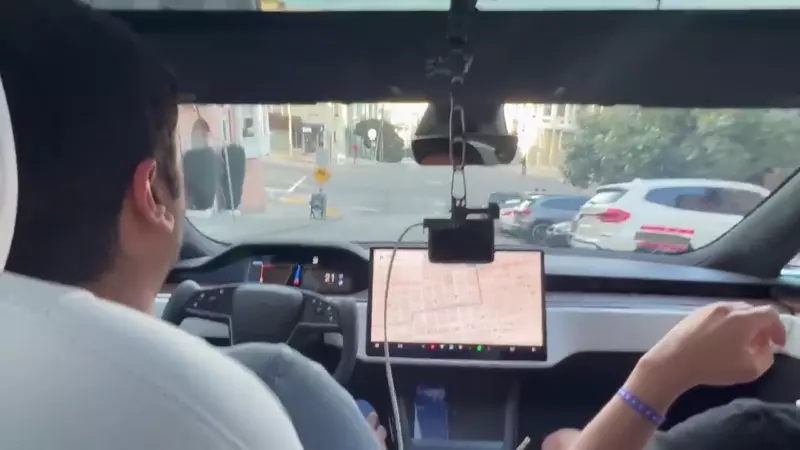Tesla Fanboys Video Comparing FSD to Waymo Fumbles After Model S Blows Through Stop Sign

The Reality of Tesla’s Advanced Driver Assistance Systems (ADAS)
In this world, three things are certain: death, taxes, and the tendency of Tesla fanatics to downplay any issues with their vehicles. It’s not often you get to witness a real-time Tesla apologist in action, but you can in this video from HyperChange.
Testing ADAS: Waymo vs. Tesla
The premise of the video is simple. The hosts want to get a sense of the state of advanced driver assistance systems (ADAS), so they take a ride in a Waymo robotaxi and meet their friend Omar Qazi, who runs the pro Tesla Whole Mars Catalog blog. They also get a ride in his Tesla Model S, which is equipped with Full Self-Driving (FSD).
However, the vehicles are not comparable. While both claim to be self-driving, the Waymo is a Level 4 autonomous robotaxi that doesn’t require anyone in the driver’s seat. On the other hand, Tesla’s FSD is classified as a level 2+ system, which means someone needs to occupy the driver’s seat and maintain control of the vehicle at all times.
Safety Lapses and Concerns
During the ride in the Tesla Model S, safety issues arise. At around the 16-minute mark, the car blows through a stop sign at an intersection, forcing Qazi to intervene and take the wheel. The vehicle then veers towards parked vehicles, requiring the driver to regain control and park the car to inspect the cleanliness of the cameras.
What makes this incident even more concerning is that it occurs while Qazi is advocating for reducing the number of sensors in self-driving vehicles to cut costs. This raises questions about Tesla’s approach to safety and its compliance with testing rules and safety measures compared to companies like Waymo and Cruise.
The Risk Shifted to Tesla Drivers
Qazi’s argument highlights how Tesla has labeled its vehicles as level 2 to regulators while advertising them as essentially level 4 to customers. This allows Tesla to bypass certain testing requirements and turn public roads into a test track, potentially compromising the safety of others. Additionally, Tesla offloads the responsibility for errors made by its ADAS systems onto its drivers.
While Qazi and the driver admit that the incident was bad, they quickly move past their concerns and emphasize the importance of getting more vehicles with FSD on the road to enable fully autonomous driving. However, recent legal decisions have ruled that drivers bear full responsibility for errors made while using Tesla’s ADAS systems, making this video incriminating evidence.
Conclusion
This video serves as a cautionary tale about the limitations and potential risks of Tesla’s ADAS systems. It highlights the need for clearer regulations and accountability in the development and deployment of self-driving technology. As Tesla enthusiasts continue to defend their favorite brand, it’s crucial to prioritize safety and ensure that advancements in autonomous driving prioritize public well-being.